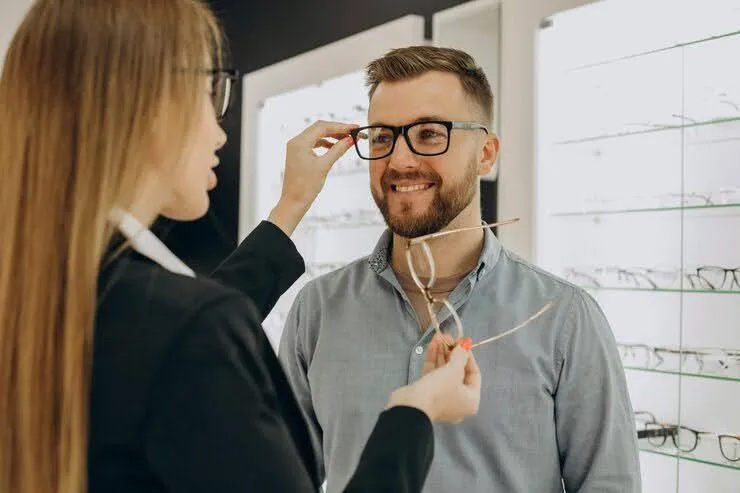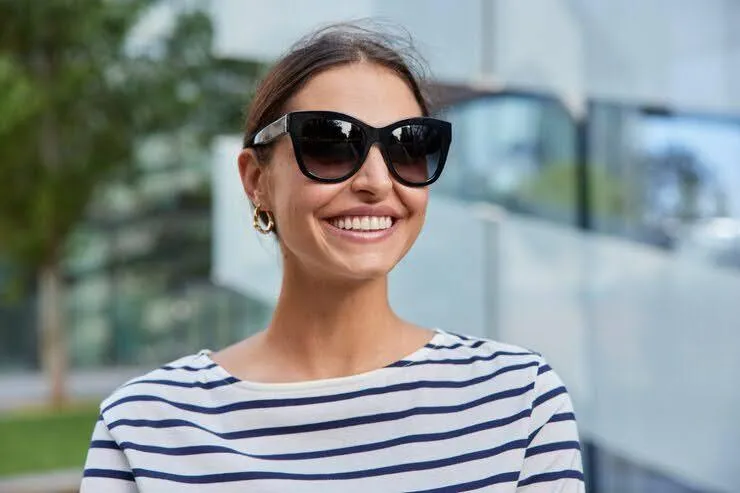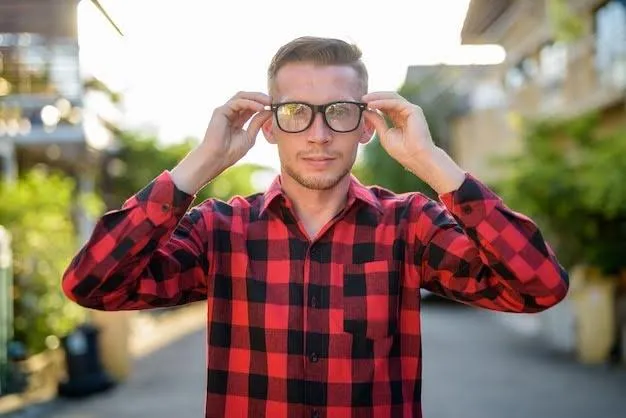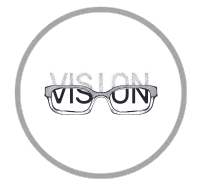Myopia Risk
Safe and Effective Managing High Myopia
FSDAVCFEBFEVSDDVFSD
FSDAVCFEBFEVSDDVFSD
FSDAVCFEBFEVSDDVFSD
Understanding High Myopia Risks
If you’re extremely nearsighted, classified as having high myopia—typically -6.00 diopters or more—you face more than just a strong prescription. High myopia, also known as pathological myopia, involves elongation of the eyeball, increasing retinal detachment risk and other complications. This includes higher chances of glaucoma and myopic maculopathy, conditions that can affect central vision.
Living with high myopia means being proactive with eye care. Regular dilated exams and retinal imaging help catch issues early. A myopia specialist Houston can monitor those at highest risk, providing guidance, early detection, and management strategies tailored to strong prescriptions. With vigilant care and smart habits, many high myopes avoid vision-threatening problems.
If you’re extremely nearsighted, classified as having high myopia—typically -6.00 diopters or more—you face more than just a strong prescription. High myopia, also known as pathological myopia, involves elongation of the eyeball, increasing retinal detachment risk and other complications. This includes higher chances of glaucoma and myopic maculopathy, conditions that can affect central vision.

Living with high myopia means being proactive with eye care. Regular dilated exams and retinal imaging help catch issues early. A myopia specialist Houston can monitor those at highest risk, providing guidance, early detection, and management strategies tailored to strong prescriptions. With vigilant care and smart habits, many high myopes avoid vision-threatening problems.

Routine Exams Ensure Eye Safety
Frequent comprehensive exams are essential for individuals with high myopia. Because elongated eyes face a heightened risk of retinal detachment, eye doctors often recommend visits every six to twelve months. These exams typically include pupil dilation and wide-field imaging to detect peripheral tears or lattice degeneration before symptoms appear. Early detection of these issues makes a significant difference in preserving long-term vision and preventing serious complications.
High myopic eyes also carry an elevated risk of glaucoma and early cataracts. Routine optic nerve evaluation and OCT imaging are important tools to track subtle changes over time. Even small shifts in vision or retinal health deserve attention, especially in adults experiencing progression. A myopia specialist Houston can carefully interpret these test results and tailor treatment plans to each patient’s needs, particularly for those with very strong prescriptions or thinning retinal tissue.
To protect high myopic eyes, patients should consider advanced protective strategies. Using high-index or polycarbonate lenses reduces lens thickness and offers impact protection. For those involved in sports or physical activities, impact-resistant goggles are essential to protect high myopic eyes from injury. Overall safety begins with proper eyewear, responsible habits, and consistent professional care.
Protective Eyewear Essentials for High Myopia

Choosing the right eyewear is essential for individuals who are extremely nearsighted. When dealing with high myopia, standard lenses often become thick and heavy, leading to discomfort and less appealing aesthetics. High-index lenses provide a great solution by reducing lens thickness and weight while maintaining excellent visual clarity. They not only improve comfort but also enhance the look of the glasses, helping wearers feel more confident in everyday life. For those with strong prescriptions, this upgrade can make a significant difference in how glasses feel and perform.

Equally important is the need to protect high myopic eyes using strong, impact-resistant materials. Polycarbonate lenses are an ideal option, as they’re lightweight and shatter-resistant—providing superior safety during daily activities and physical movement. This durability is especially beneficial for those who are active or at risk of accidental impact, as highly myopic eyes are more vulnerable to injury.
For people participating in sports or activities where there’s a risk of impact, sports goggles specifically designed for high myopia are highly recommended. These goggles provide crucial protection, significantly reducing the risk of eye trauma that could lead to serious complications like retinal detachment. Because high myopic eyes have elongated shapes and stretched retinas, they are more fragile and vulnerable to injury. Even what seems like a minor bump or fall can cause lasting damage. Choosing eyewear that absorbs shock and fits securely can make all the difference in preventing long-term complications.
To ensure the best protection and performance, it’s essential to consult a myopia specialist Houston. These professionals are trained to match your prescription needs with protective eyewear options suited to your lifestyle—whether that involves sports, physical work, or general activity. They’ll help you find durable, impact-resistant lenses and frames that won’t compromise vision quality or comfort. Protecting high myopic eyes starts with smart, personalized choices that prioritize both safety and function. With the right guidance, you can stay active while managing your vision responsibly.
Controlling Myopia in Adults Effectively
While most myopia control efforts focus on children, adults with high myopia may also benefit from specific interventions. For instance, Ortho-K lenses worn overnight can temporarily reshape the cornea, offering clearer daytime vision without the need for glasses or contacts. They may also help stabilize minor prescription changes in adults. In some cases, low-dose atropine therapy—commonly used in children—might be considered for adults still experiencing small shifts in refraction.
Even if myopia progression has slowed, regular monitoring remains essential. A myopia specialist Houston can assess whether optical or pharmacological methods could support long-term stability. Switching to contact lenses may also reduce optical distortion and improve peripheral vision, offering better visual comfort for those with strong prescriptions. Openly discussing available strategies ensures adults can make informed decisions that align with their visual goals, lifestyle, and long-term eye health.
Healthy Habits for Eye Care
Simple lifestyle adjustments can support long‑term eye health in individuals with high myopia. One helpful habit is following the 20‑20‑20 rule—every 20 minutes, look at something 20 feet away for 20 seconds. This helps reduce eye strain and may slow further eye elongation.
Overall health plays a role too. Conditions like diabetes and hypertension can worsen retinal issues in pathological myopia, so regular medical and eye exams are essential. Wearing UV-protective sunglasses also shields eyes from sunlight, offering added comfort and protection.
Simple lifestyle adjustments can support long‑term eye health in individuals with high myopia. One helpful habit is following the 20‑20‑20 rule—every 20 minutes, look at something 20 feet away for 20 seconds. This helps reduce eye strain and may slow further eye elongation.
Overall health plays a role too. Conditions like diabetes and hypertension can worsen retinal issues in pathological myopia, so regular medical and eye exams are essential. Wearing UV-protective sunglasses also shields eyes from sunlight, offering added comfort and protection.


Spending time outdoors and staying hydrated may help reduce visual fatigue. While these habits won’t reverse myopia, they support eye comfort and may preserve quality of life for people with extreme nearsightedness. These small changes can make a big difference over time.
Choosing the Right Specialty Eye Care
Opting for care from a myopia specialist Houston provides important advantages for individuals coping with high myopia. These specialists understand the risks associated with pathological myopia and use advanced diagnostic tools—such as OCT scanning, retinal imaging, and visual field testing—to monitor changes closely. Their expertise helps detect early signs of serious conditions like myopic maculopathy or glaucoma, allowing timely intervention to preserve vision and eye health.
At Kleinwood Vision, comprehensive exams for patients with high myopia include wide-field imaging to identify issues such as retinal tears or lattice degeneration before symptoms arise. This early detection is crucial for preventing vision loss. Additionally, patients with very strong prescriptions receive guidance on options such as contact lenses, protective eyewear, and myopia control treatments available for adults. These approaches help improve comfort, vision clarity, and safety.
Regular follow-up appointments every six to twelve months are essential for effective management. During these visits, the specialist can evaluate progression and adjust treatment plans accordingly. Choosing high-index lenses and sports goggles designed specifically for strong prescriptions also supports prevention efforts. These protective measures help protect high myopic eyes from both long-term health risks and everyday impacts, reducing the likelihood of injury or further complications.
This comprehensive and personalized approach provides peace of mind. Many individuals with high myopia live healthy, active lives without major complications when their eye care is proactive, consistent, and tailored to their unique needs. Prioritizing specialized care and protective eyewear ensures optimal vision health and quality of life over time.
Everyday Safety Tips for Eye Health
Living with extremely nearsighted vision requires daily precautions to protect your eyes. Always wear corrective eyewear—even during casual outings—as vision without correction can be severely blurred and unsafe. High-index lenses improve clarity while reducing the thickness of glasses, making them more comfortable for daily wear.
Choosing impact-resistant frames and polycarbonate lenses is essential. These materials help protect sensitive eyes from minor trauma that could trigger serious retinal events. For those engaged in physical activities, using sports goggles provides an additional layer of protection to safeguard your vision.

Living with extremely nearsighted vision requires daily precautions to protect your eyes. Always wear corrective eyewear—even during casual outings—as vision without correction can be severely blurred and unsafe. High-index lenses improve clarity while reducing the thickness of glasses, making them more comfortable for daily wear.
Choosing impact-resistant frames and polycarbonate lenses is essential. These materials help protect sensitive eyes from minor trauma that could trigger serious retinal events. For those engaged in physical activities, using sports goggles provides an additional layer of protection to safeguard your vision.
It’s important to stay alert for warning signs such as flashes of light, new floaters, or shadows in your peripheral vision. These symptoms may indicate a retinal tear or detachment and require immediate attention. Having a trusted myopia specialist Houston ensures you can act quickly and receive timely care to protect your eye health effectively.
Stay Proactive for Vision Health
High myopia is a lifelong condition, but with attentive care, its risks don’t have to define your vision journey. Working with a myopia specialist Houston ensures professional oversight of potential complications like retinal detachment or glaucoma. This proactive monitoring is essential for maintaining long-term visual health and preventing serious issues before they develop. Regular eye exams allow for early detection and timely intervention, which can preserve vision and improve outcomes.
It’s important to schedule regular dilated exams, stay consistent with protective eyewear, and adopt healthy vision habits. Whether discussing myopia control options or adjusting lenses, your eye doctor provides tailored guidance to suit your unique needs. With the right approach, individuals with high myopia can enjoy quality vision and feel confident in their eye care plan, knowing they are taking crucial steps to protect their eyes and maintain eye health throughout their lives.

Contact Info
Hours of Operation
Mon - Fri | 9:00 AM - 5:00 PM
Sat - Sun | Closed
Holiday Hours: We are closed for the following holidays: New Years Day, Memorial Day, Independence Day, Labor Day, Thanksgiving Day, Christmas Day
© 2025 Kleinwood Vision. All rights Reserved.


